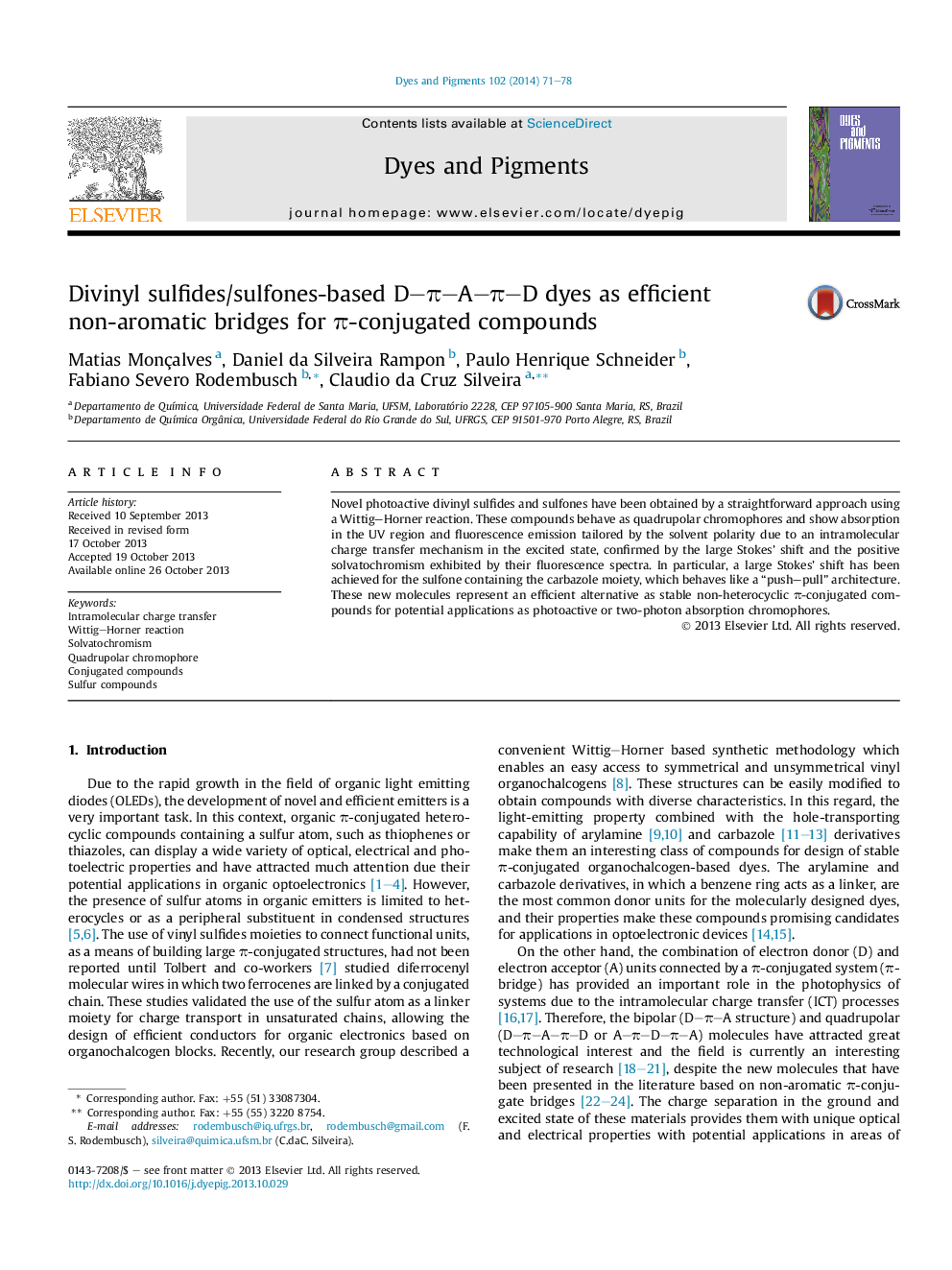| Article ID | Journal | Published Year | Pages | File Type |
|---|---|---|---|---|
| 176169 | Dyes and Pigments | 2014 | 8 Pages |
•Novel photoactive divinyl sulfides and sulfones obtained by a Wittig–Horner reaction.•Photophysics tailored by solvent polarity.•Photophysical behavior due to intramolecular charge transfer in the excited state.•Thermal stable, non-heterocyclic nucleus with an efficient ICT mechanism.•Sulfones behave as a “push–pull-like” architecture.
Novel photoactive divinyl sulfides and sulfones have been obtained by a straightforward approach using a Wittig–Horner reaction. These compounds behave as quadrupolar chromophores and show absorption in the UV region and fluorescence emission tailored by the solvent polarity due to an intramolecular charge transfer mechanism in the excited state, confirmed by the large Stokes' shift and the positive solvatochromism exhibited by their fluorescence spectra. In particular, a large Stokes' shift has been achieved for the sulfone containing the carbazole moiety, which behaves like a “push–pull” architecture. These new molecules represent an efficient alternative as stable non-heterocyclic π-conjugated compounds for potential applications as photoactive or two-photon absorption chromophores.
Graphical abstractFigure optionsDownload full-size imageDownload as PowerPoint slide
